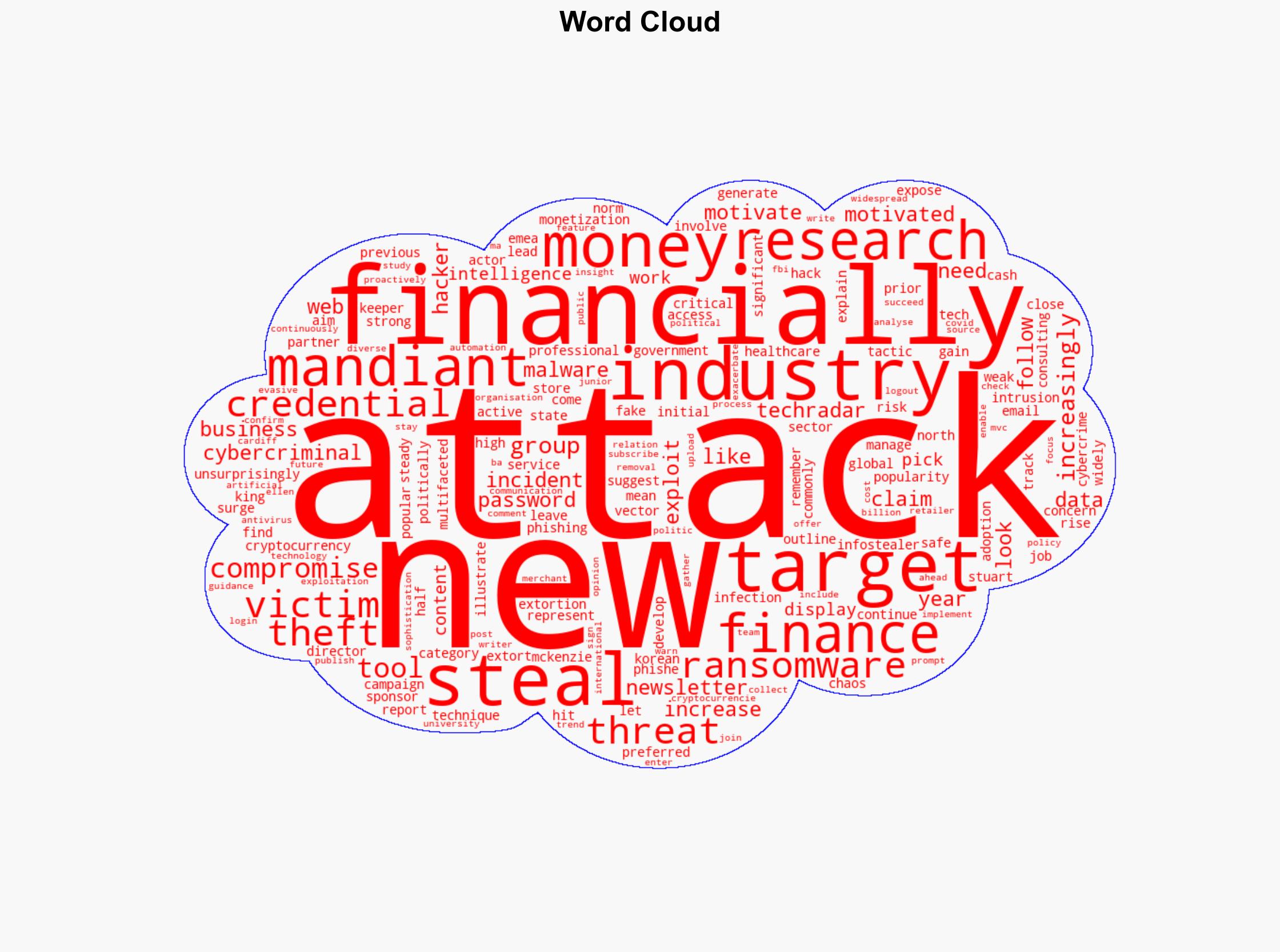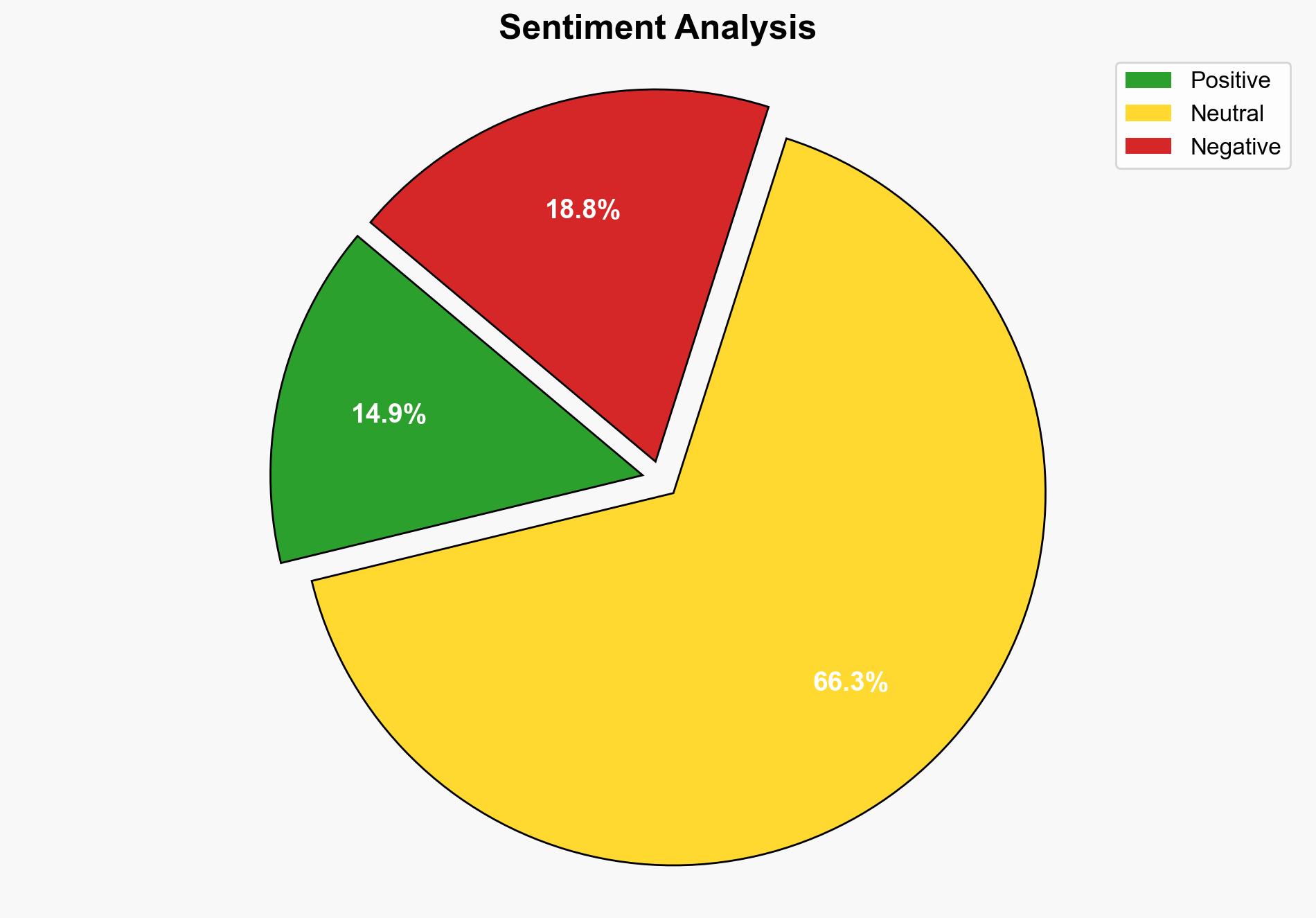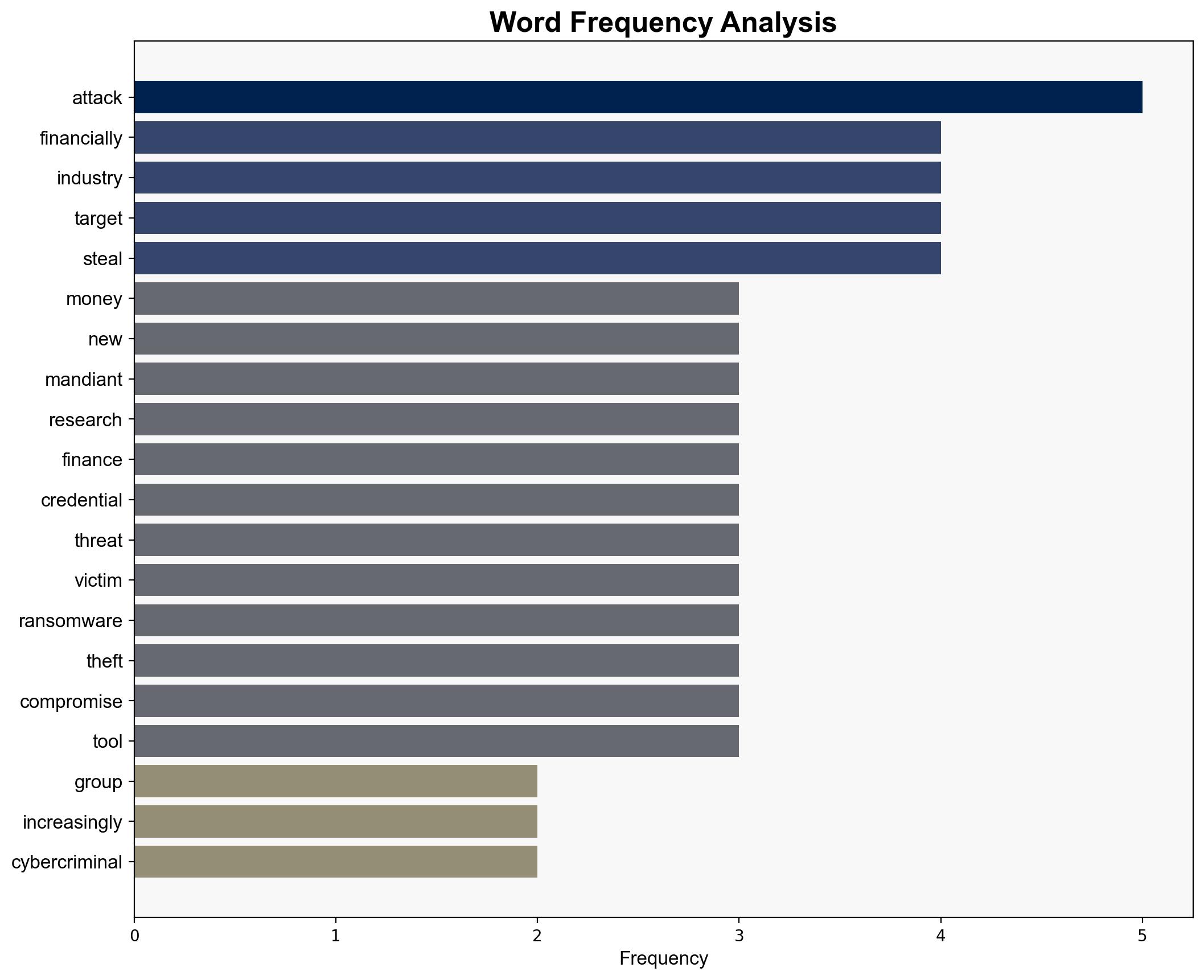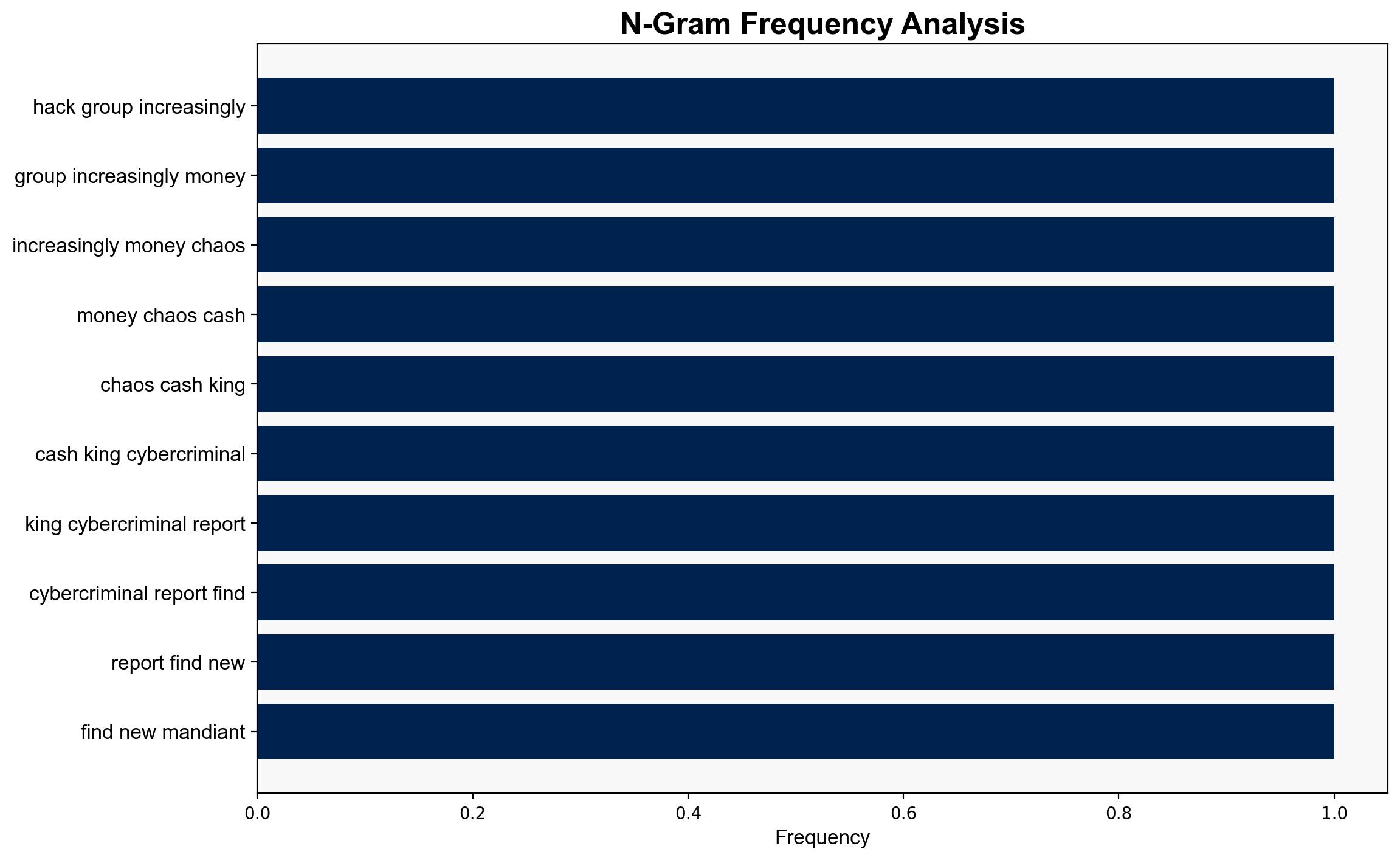Hacking groups are now increasingly in it for the money not the chaos – TechRadar
Published on: 2025-04-24
Intelligence Report: Hacking groups are now increasingly in it for the money not the chaos – TechRadar
1. BLUF (Bottom Line Up Front)
Recent research indicates a significant shift in the motivations of hacking groups, with a growing emphasis on financial gain over chaos. This trend is highlighted by the increasing frequency of financially motivated cyber incidents, such as ransomware and data theft. Organizations, particularly in the finance sector, are at heightened risk and must adapt their cybersecurity strategies accordingly.
2. Detailed Analysis
The following structured analytic techniques have been applied to ensure methodological consistency:
Analysis of Competing Hypotheses (ACH)
The evidence suggests that financial motivations are now the predominant driver behind cyber incidents. Alternative hypotheses, such as political or ideological motivations, are less supported by recent data. The focus on financial gain is underscored by the prevalence of ransomware and credential theft.
SWOT Analysis
Strengths: Increased awareness and investment in cybersecurity tools.
Weaknesses: Persistent vulnerabilities in credential management and phishing defenses.
Opportunities: Adoption of AI and automation for proactive threat detection.
Threats: Rising sophistication of cybercriminal tactics and techniques.
Indicators Development
Key indicators of emerging threats include increased phishing campaigns, lateral movement within networks, and the deployment of infostealer malware. Monitoring these indicators can provide early warning signs of potential breaches.
3. Implications and Strategic Risks
The shift towards financially motivated cybercrime poses significant risks to economic stability and organizational integrity. The finance industry remains a primary target, but the threat extends to critical sectors such as healthcare and government. The potential for widespread disruption and financial loss is substantial, necessitating a coordinated response across industries.
4. Recommendations and Outlook
- Enhance credential management practices and deploy multi-factor authentication to mitigate credential theft risks.
- Invest in AI-driven cybersecurity solutions to improve threat detection and response capabilities.
- Conduct regular phishing awareness training for employees to reduce susceptibility to social engineering attacks.
- Scenario-based projections:
- Best Case: Successful implementation of advanced cybersecurity measures reduces incident frequency.
- Worst Case: Failure to adapt leads to increased financial losses and operational disruptions.
- Most Likely: Continued adaptation and investment in cybersecurity yield moderate risk reduction.
5. Key Individuals and Entities
Stuart McKenzie
6. Thematic Tags
(‘national security threats, cybersecurity, counter-terrorism, regional focus’, ‘cybersecurity’, ‘counter-terrorism’, ‘regional focus’)





